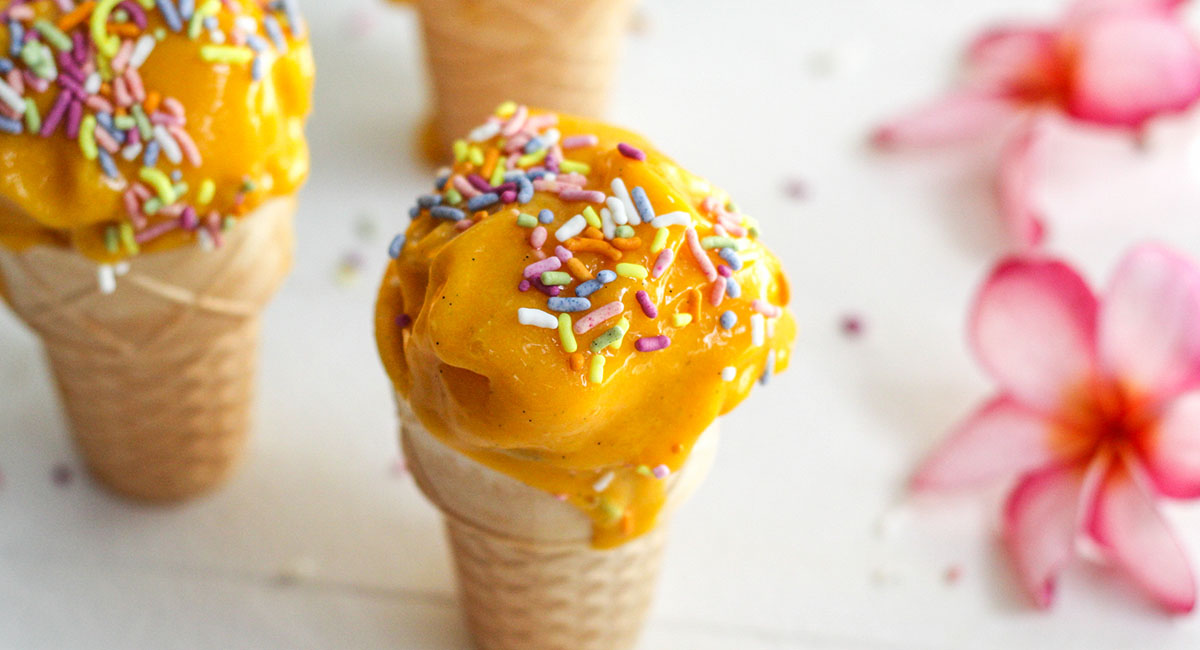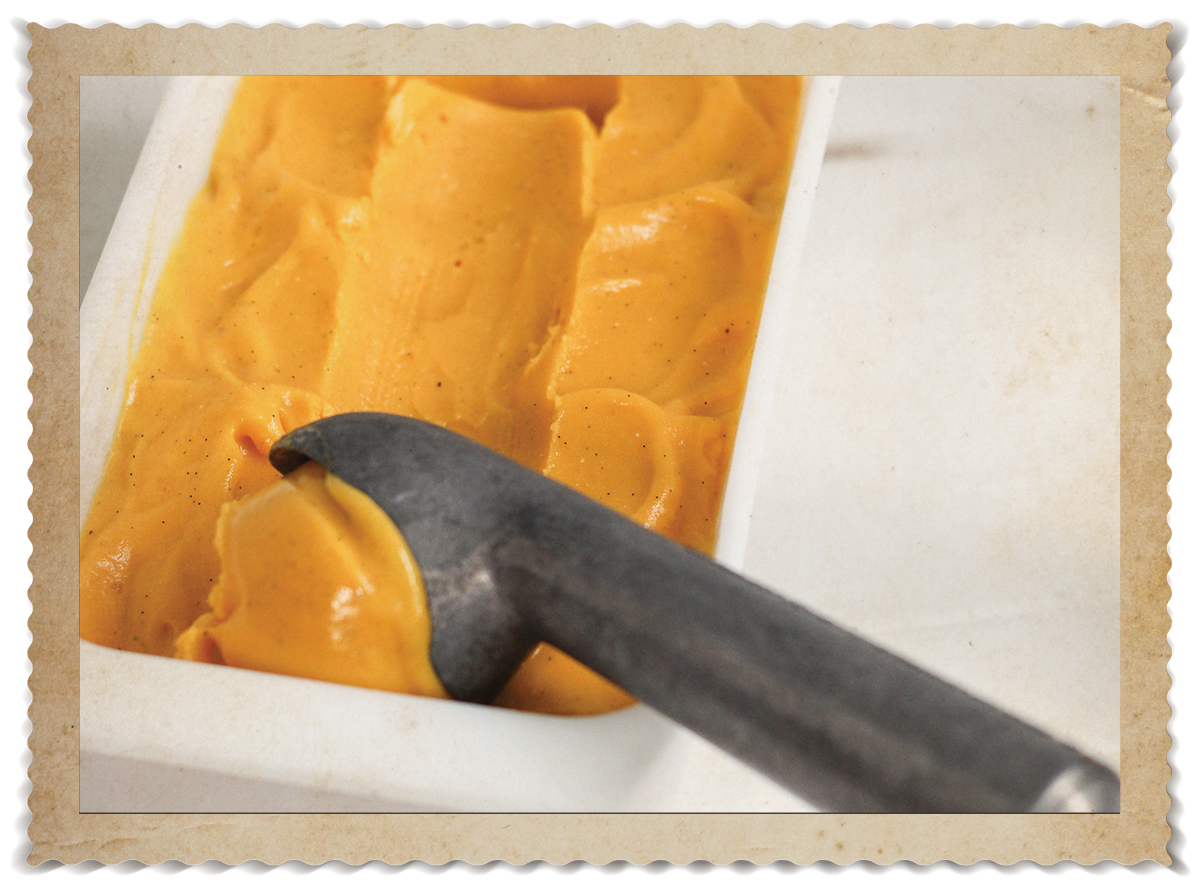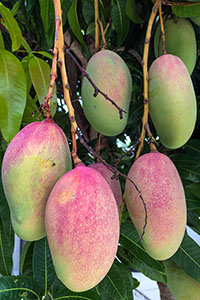Magical Mangos

This refreshing dessert showcases the vibrant color and tropical flavor
of mangos. DANIELLE ROSE PHOTOS
A fruit so sweet, it makes Florida summers a treat
Florida summer is famously inhospitable. The air is thick with humidity and the heat is relentless. Late afternoons are punctuated by thunderstorms; mosquitoes rule at dusk. Even when the tropics seem quiet, hurricanes remain on our radar. But there is a reward for all the sweat and suffering: the sweet taste of a perfect mango.
To some, a mango is a mango. For the rest of us, a mango is the king of all fruit; its season, a cause for celebration. Every summer of my childhood, I watched my grandma’s giant Keitt mangos slowly ripen into shades of rainbow sherbet. Once they yielded to a gentle squeeze, she sliced them and served them in glass dishes with dessert spoons. We marveled over each bite and always agreed it was the most delicious thing we’d ever eaten.
She often told me stories of the ones she ate as a child in St. Lucie Village. Her mother, Sara Summerlin, planted a new, special variety called a Haden that was the pride of her garden — not to be touched by the kids. But the small turpentine mangos that grew wild around the village were fair game. My grandma, Polly, and her Summerlin cousins would pick buckets of them, bringing them to the bank of the Indian River to eat. They would bite open the skin and squeeze the pulp into their mouths, allowing the juice to drip down their chins. They always ended up with rashes on their faces the next day, thanks to urushiol, the same compound found in poison ivy, which is also in a mango’s sap and skin. It never deterred them.
Originally from India, mangos have long been a popular backyard fruit around Fort Pierce. They grow on beautiful shade trees that spread over the old neighborhoods. In the summer, when the trees are dripping with fruit in neon colors, you can’t miss them. Sometimes there’s a bumper crop and neighbors leave boxes of their harvest on each other’s porches. Farmer’s markets offer endless varieties — and all mango enthusiasts light up when talking about their favorites. Mine is the silky smooth, outrageously sweet Glenn.
It’s hard to beat a perfect mango eaten out of hand. But during the dog days of summer, this mango ice cream is fun to make and a delicious treat. There are only a few ingredients, and you don’t need an ice cream maker; a blender or food processor will work just fine. There are flecks of vanilla and coconut cream, but the flavor of your favorite mango variety shines through. Happy summer, mango lovers!

A simple blend of frozen mango and coconut milk makes a creamy, fruit-based ice cream with no added sugar.
No-churn Mango Ice Cream

Valencia Pride mangos are one of the many varieties that grow in Florida. DANIELLE ROSE PHOTOS
INGREDIENTS
6 cups frozen mango chunks
1 vanilla bean [or 1 1/2 tablespoons vanilla extract]
1 can coconut milk, refrigerated
pinch of salt
Optional: ice cream cones and rainbow sprinkles
INSTRUCTIONS
Place the mango chunks in a blender or food processor.
Slice the vanilla bean, lengthwise. Use the tip of the knife to scrape out the seed pulp and add it to the blender. Open the refrigerated coconut milk, without shaking it. Scoop 1/3 cup of cold coconut cream from the top of the can and add it to the blender, along with a pinch of salt. Blend until smooth, stopping the machine as needed to tamp down the ingredients. If it’s too thick to blend, add more coconut milk.
Scrape the contents of the blender into a loaf pan. Smooth the top with a spatula and place the loaf pan in the freezer. After 4 hours, it should be firm enough to scoop.
Serve in a bowl or ice cream cone, and top with sprinkles.
If freezing for more than 4 hours, press plastic wrap over the top to prevent ice crystals from forming. It may need to thaw a few minutes on the counter to be soft enough to scoop.

Danielle Rose
Danielle Rose is a seventh-generation Florida gardener and fisherwoman and descendant of the prodigious Summerlin family. A graduate of the University of Florida, she loves gathering friends and family around the table for homegrown food.



